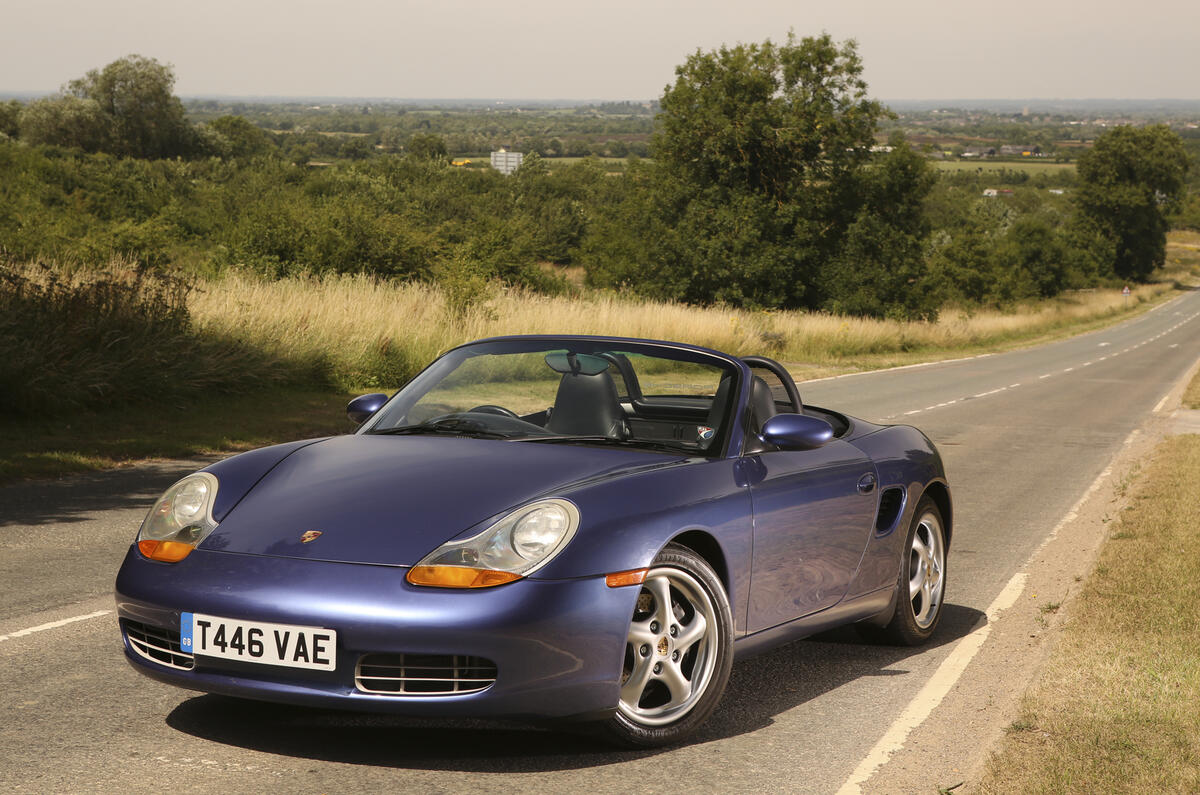On driving pleasure per pound spent, an early Porsche Boxster has to be a front-runner right now.
You can buy a distantly-travelled, base 2.5-litre-engined 986 for little more than £4000 these days, and while that might be a pool to dip into with caution, you don’t have to spend a heap more to get a car that’s a long way short of 100,000 miles.
For your money you get a Porsche flat six for starters and yes, it will wail your neck hairs to attention if you exercise it hard enough. It sits right behind you, of course, so that your Boxster seems to pivot from a point deep beneath the handbrake, its main heft located for optimal direction changing.
More optimal than big brother can naturally deliver in fact, the flat six shifted rearwards in the interests of 911 tradition and the provision of an extra pair of seats. The Boxster’s steering wheel swivels with oiled, well-measured resistance, it twitches in sympathy with the topography beneath, and vibrates as the front tyres break their grip if you’ve pushed it hard enough. In other words, you get real feel at the rim.
You’ll also enjoy a low-roll, forgiving ride, firmly potent brakes, a solidly slicing shift and a feelsome clutch, all the controls melding and blending in a way that confirms this car’s breeding every time you drive it. Even to the shops.
Few cars offer such tactile pedigree for so little money. One reason these Porsches are relatively cheap is that they’re relatively old, the youngest 986-generation Boxster now 15 and looking slightly dowdy because it’s gone out of fashion. That also means that some are looking tired and a little unloved now.
There’s another reason for the low prices, and it may well be familiar, this the much scribbled-about issues with the Boxster and the 996-generation 911.
Cylinder liner cracks, the destructive failure of the intermediate shaft bearing and leaky crankshaft main oil seals are the risks, the first two potentially very expensive. But mitigating modifications can be made – if you have them done when the clutch is changed you’ll get better value from the gearbox-out labour bill – and the pre-2000 Boxsters use a more durable intermediate shaft bearing.
The problems actually occur pretty rarely, and quite a number of cars may have been modified, but there’s no doubt that these threats reduce Boxster prices. An engine rebuild will almost certainly cost more than the car is worth.
Which gives you the intriguing possibility of running a cheap Boxster until its engine blows. Which it may never do, of course, but equally, you could be looking at the smoking ruin of a flat six mere hours after you bought the car. In which case your chosen descriptor of the situation might not necessarily be “intriguing”. That would be an unlucky outcome, and in most other respects the Boxster is a pretty robust machine. It’s certainly not prone to corrosion.




Join the debate
Add your comment
@ LP in Brighton, Jonny Smith on the Late Brake Show (You Tube) did just that (bought a cheap Boxster) and is having fun!
I'll check it out. But many years ago I had "fun" running a couple of tired Lotus Elans. Now I was lucky enough to have access to full workshop facilities plus help and advice from friends in the trade - and even then I spent a lot more time repairing and fettling them than I ever did driving them. That's the enthusiasm that comes from youth - but with age and experience I now prefer cars that are a little more useful and less demanding!
And please report on the experience. It would make rather more interesting reading than articles about the latest £100k plus models which really don’t need a road test to tell us how brilliant they are.
I’m sure your readers would appreciate a dose of reality rather than constant appeasement of an industry geared up to sell vast numbers of cars most of us cannot afford!